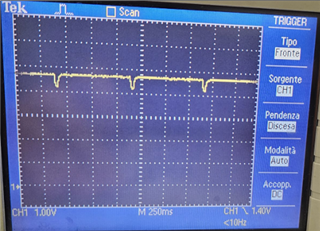Other Parts Discussed in Thread: BQ40Z50, EV2400, BQSTUDIO
Tool/software:
We have developed a BMD circuti based on BQ40Z50. It manages 4 LIFE batteries, connected in series.
It happens that we receive a battery from the field that cannot be recharged any more.
The BMS is working, but even if connected to power, the current consumption is zero.
The SMB bus (using EV2400) reports more than 60% of SOC.
Furthermore, looking at the pack output, we see 5V with a pattern of drops every 1500ms. See picture below

The BMS is responsive, we read the registers, we can toggle LEDs.
I am attaching the log files captured by bqStudio and BMS schematic.
05_SPYFLY_BMS_Rev2_Schematics.pdf
Do you have any idea what happened to the pack?
Thank you very much
Kind regards
Andrea

